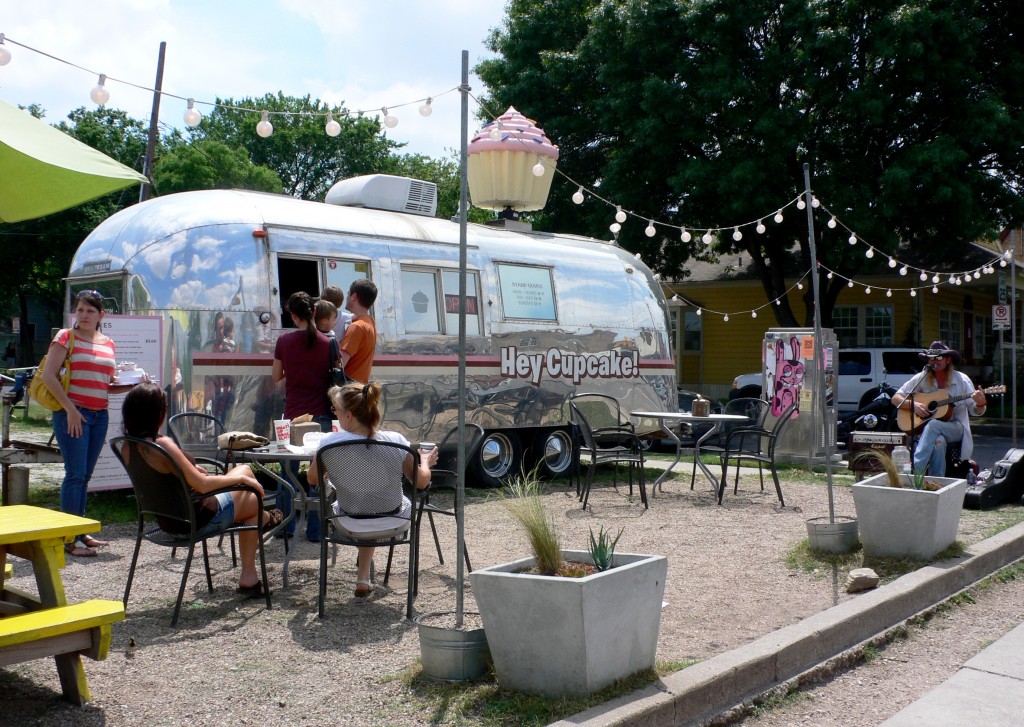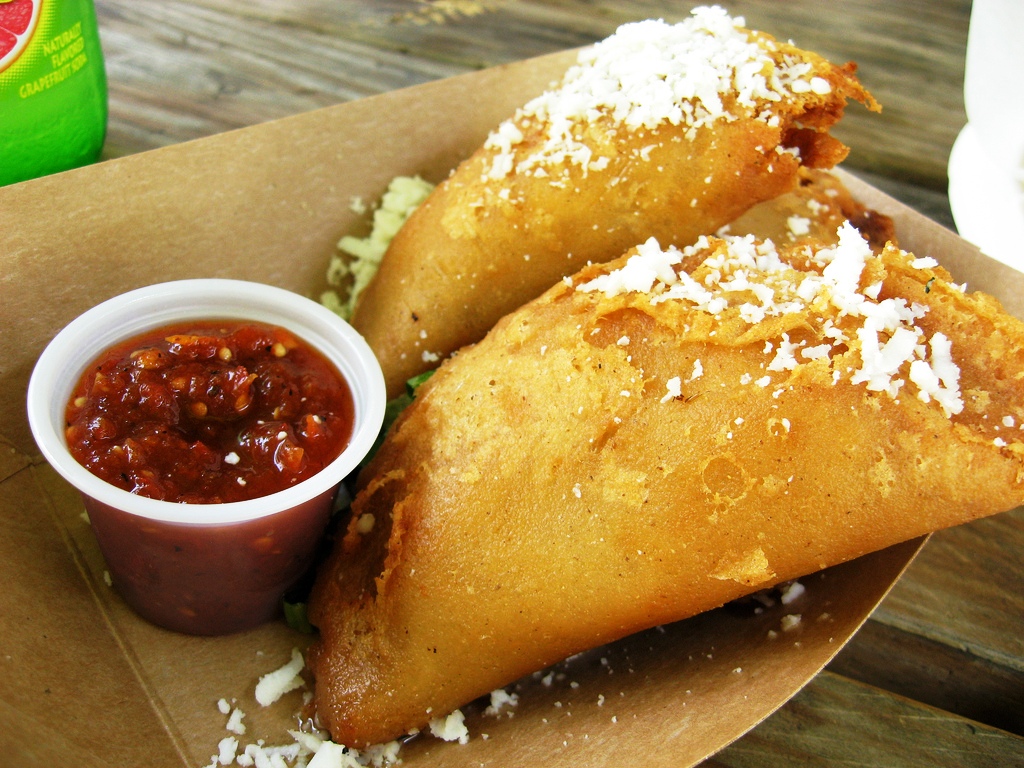
- Food trucks offering all kinds of fare, often cheaply, are a way of life in Austin. Courtesy of Heather Cowper of Heatheronhertravels.com
Young, coastal city dwellers love Austin, Texas. My friends descend on the self-proclaimed Live Music Capital of the World for Austin City Limits or SXSW and come back glowing from the sun, elated by the amazing music scene — and a little bloated from the abundance of tacos. The general consensus: Austin is really awesome. Or, as one friend exclaimed after a recent trip, “It’s like San Francisco, but cheap!”
The more I learn about Austin, the better it sounds. Living in San Francisco and having quite a few friends in New York City means I hear a lot of people worry about money. Last year, Forbes magazine ranked San Francisco and New York no. 19 and 13, respectively, on its “Most Overpriced Cities” list.
Austin, on the other hand, didn’t appear on the list at all. Here in San Francisco, the average rent for a one-bedroom apartment is $1,848 — way more palatable than $2,568 in New York. but in comparison, a one-bedroom Austin apartment costs just $944. The Texas state capital also boasts an astonishingly low unemployment rate, 4.6 percent–much lower than San Francisco’s 6.5, New York’s 8.8 or the national average of 7.7.
So how is it possible that a city with a reputation for being extremely affordable also spends the most on eating out, per person, in the United States — at least according to this 2010 report? To get a local perspective, I checked in with three current Austin residents — Ashley, an educational technology consultant for McGraw Hill; Nick, a server and car blogger; and Graham, a wardrobe stylist and graphic designer — for their theories on food spending in their city. *
Lots Of Disposable Income
Texas’ booming economy has been a topic of media fascination for many years, and people are moving to Austin in droves.
Mass migration from high-earning areas like Silicon Valley and New York means there are a lot of people with an appetite for luxury. For example, Austin just opened a Ferrari dealership, not long after Rolls Royce and Aston Martin moved in. The city also plays host to a number of celebrity chef-owned restaurants, such as James Beard Award-winner Tyler Cole’s Uchi, where three people could spend $400 on dinner—hardly a quotidian expense.
But in Austin, Graham says, even the less wealthy can afford to go out on the town. He estimates he makes between $15,000 and $20,000, but he says it’s easy to find a $2-3 Lonestar tallboy on a night out, and he would never spend more than $4 or $5 on a higher-end beer. For cheap food, he usually buys cheap Mexican food from Los Altos near his Cherrywood home, where most items are $5 and breakfast tacos are $2 each, or $1 early in the morning.
“It’s not necessary to spend much out here, but because things are so cheap, people eat out a lot. It’s not a special occasion thing,” he says.
Austinites Take Food Very Seriously

- Austinites are huge Tex-Mex fans Photo credit: Kimberly Vardeman
When I asked my sources what they would cut from their budgets if their incomes dropped, the answer was unanimous: NOT FOOD!
Eating is an important part of most cultures, of course, but Austin residents appear to be especially aware of how their food scene is changing. “The new live music is good food,” Ashley proclaimed. Or, as Graham put it, “Austin is transitioning from a place to eat good food to a foodie town.”
Traditionally, Austin has been home to an abundance of greasy, 89-cent tacos or barbecue places like Franklin, where you order piles of brisket, sausage or pork by the pound, served on butcher paper alongside a half a loaf of plain white bread. As wealth grew, however, so did food options.
The food trailer scene is so big there’s actually a site for curating them. Asking my sources about their favorite tacos from Torchy’s, a popular food truck, set off a firestorm of responses: the monthly special (this month it’s the Holy Diver, made of shrimp), fried avocado, Jamaican jerk chicken, barbacoa (face meat), and breakfast, to name a few. There are restaurants that fly in burrata from Italy, places that specialize in making their own pasta and spots that exclusively serve hot dogs or pork and pie. Restaurants advertise their locally-sourced, farm-to-table, gluten-free menus, while still priding themselves on an unpretentious attitude towards food (apparently you can still see millionaires tucking a napkin into their button-down shirts and gobbling a $3 taco).
So here’s my most plausible explanation for high restaurant spending in Austin: a beer here or a taco there between shows or at a festival never feels like very much money, and why wouldn’t you go out to dinner when there is a place specializing in gourmet fried chicken or avocado margaritas? It adds up over time, but with low unemployment, low costs of living, relatively high incomes and lots of options in every price range, it’s not difficult for Austin residents to eat food worthy of the abundant Instagram shots they share across the web — and still live within their means.
* The 2010 report also showed that Austin residents spent more per-person on groceries than any other U.S. city. Here, I focused just on the eating-out side of the equation.
Living on any kind of budget isn’t easy, but when it comes to food, each dollar really counts. Food scarcity is a real issue many Americans face daily. Next week, WTE takes a look at the challenges of putting food on the table with food stamps — and offers some strategies to help stretch your food dollars.


